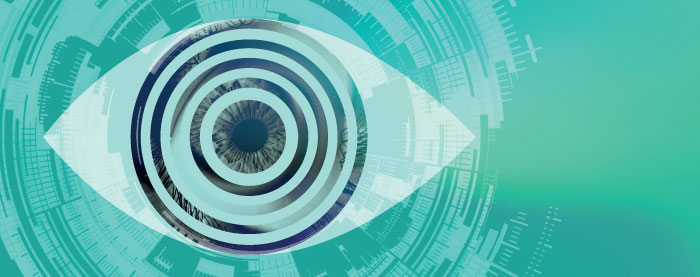
What can eyes tell us about the brain? A recent report has found that horizontal and vertical self-paced saccades – the rapid movements of the eye between fixation points – act as a biomarker of traumatic brain injury (TBI). To test this hypothesis, researchers compared the horizontal and vertical saccades of people with no history of TBI and patients with a clinical diagnosis of TBI using RightEye eye-tracking technology. A total of 287 clinically verified participants, reporting either no TBI, mild, moderate or severe TBI participated in the tests. They concluded that eye tracking was an objective and quantifiable way of measuring not just the presence of TBI, but also the severity of the condition. Melissa Hunfalvay, Chief Scientific Officer at RightEye, explains why the technology is so necessary.
The current method of assessing a TBI is through a clinical exam. From there, the clinician decides if the patient’s eye behaviors are normal or abnormal. There are a number of limitations to this method. First, problems with eye movements are often hard to observe. The sensitivity of the eye tracker allows you to be more specific in the clinical observation. Second, a diagnosis of “abnormal” cannot be quantified on a scale. Say I come to you today with a TBI and you diagnose me as abnormal. But what if I come to you a week from today? My eye movements may still be abnormal but in fact, I have improved by 30 percent. RightEye eye tracking, now provides a scale to identify that change.
One of the challenges with TBI, even more so than some other chronic conditions, is that there are so many factors that affect it, such as age, gender, how severe the concussion was, the type and location of the head injury. There are three aspects that clinicians look for in every TBI case. One is balance or vestibular issues, the second is cognition and the third is eye movements, which is what RightEye specifically focuses on. In 2017, I published a case study of a female patient who suffered a severe TBI after a car accident. Two and a half years later, she still had a tough time making a circle with her eyes. Issues can linger for many years and that’s one of the challenges with a TBI. It is also one of the benefits of eye tracking because it allows us to measure and track the injury over time to see which, if any, therapies or interventions are making a difference.
Our goal is to be able to provide clinicians with something specific and accurate so that they can determine the next steps for care. Those steps could be anything from rest to vision therapy but we put that in the hands of the clinician because they are experts in this field, and they have the patient’s full clinical history. We have to look at RightEye as just one piece of the puzzle.
There are three main categories of eye movement: fixations, which is a stopping point of the eye; pursuit, which is when the eye follows an object, and saccades, fast movements designed to reposition the eye, which allows us to see in detail. All three categories have been shown to be altered in patients with a TBI. Our recent study was focused on saccades, but we have another on the way, reviewing pursuit. It is only by assessing all three types of eye movement that we can fully understand the extent of the problem as it relates to the eyes contribution to the overall clinical outcome.
References
- M Hunfalvay et al., “Horizontal and vertical self-paced saccades as a diagnostic marker of traumatic brain injury”, Concussion, 4 (2019). PMID: 31467684.
